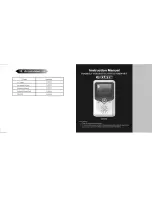
8
Fuel Factors
An important consideration affecting the entire installation
is the type of fuel used by your generator. The system was
factory tested and adjusted using either natural gas or liquid
propane (LP vapor). For proper engine function, factors
that are inherent to each of these fuels, your location and
the duration of possible utility interruptions are important
considerations in the following fuel guidelines:
• Use clean, dry fuel, free of moisture or any
particulate material. Using fuels outside the
following recommended values may cause
performance problems.
• In engines set up to run on propane (LP), commercial
grade HD5 propane with a minimum fuel energy of
2500 BTUs/ft3 with maximum propylene content of
5% and butane and heavier gas content of 2.5% and
minimum propane content of 90%.
Natural gas rating will depend on specific fuel but typical
derates are between 10 to 20% off the LP gas rating.
Power Decrease at High Altitude or High Temperature
Air density is less at high altitudes, resulting in less available
engine power. Specifically, engine power will decrease 3.5%
for each 1,000 feet (300 meters) above sea level and 1% for
each 10° F (5.6°C) above 77°F (25°C). Make sure you and
your installer consider these factors when determining total
generator load.
Generator Location
The actual physical location of your generator has a direct
affect on:
1. The amount of plumbing required to fuel
your generator.
2. The amount of wiring required to control and connect
your generator.
Specific location guidelines are discussed in the installation
manual. Acquaint yourself with that information and confer
with your installer. Be sure to ask how your site might
affect installation costs and compliance with local codes
and standards.
The generator must be installed outdoors. DO NOT install
generator where exhaust gas could accumulate and enter
inside or be drawn into a potentially occupied building.
Ensure exhaust gas is kept away from any windows, doors,
ventilation intakes or other openings that can allow exhaust
gas to collect in a confined area. Prevailing winds and air
currents should be taken into consideration when positioning
generator. See the installation manual for full details on safe
generator location.
WARNING
Exhaust heat/gases can ignite
combustibles or structures causing a fire.
DO NOT install the generator closer than 5 feet (1.5m)
•
from any combustibles or structures with combustible
walls having a fire resistance rating of less than 1 hour.
WARNING
Running engine gives off carbon
monoxide, an odorless, colorless, poison gas.
Breathing carbon monoxide can cause headache,
fatigue, dizziness, vomiting, confusion, seizures,
nausea, fainting or death.
Operate generator ONLY outdoors.
•
Install a battery operated carbon monoxide alarm near
•
the bedrooms.
Keep exhaust gas from entering a confined area through
•
windows, doors, ventilation intakes, or other openings.
WARNING
Propane and Natural Gas are extremely
flammable and explosive.
Fire or explosion can cause severe burns
or death.
The residential generator is equipped with an automatic
•
safety gas “fuel shut-off” valve.
DO NOT operate the equipment if the “fuel shut-off” valve
•
is missing or inoperative.
Not
for
Reproduction









































